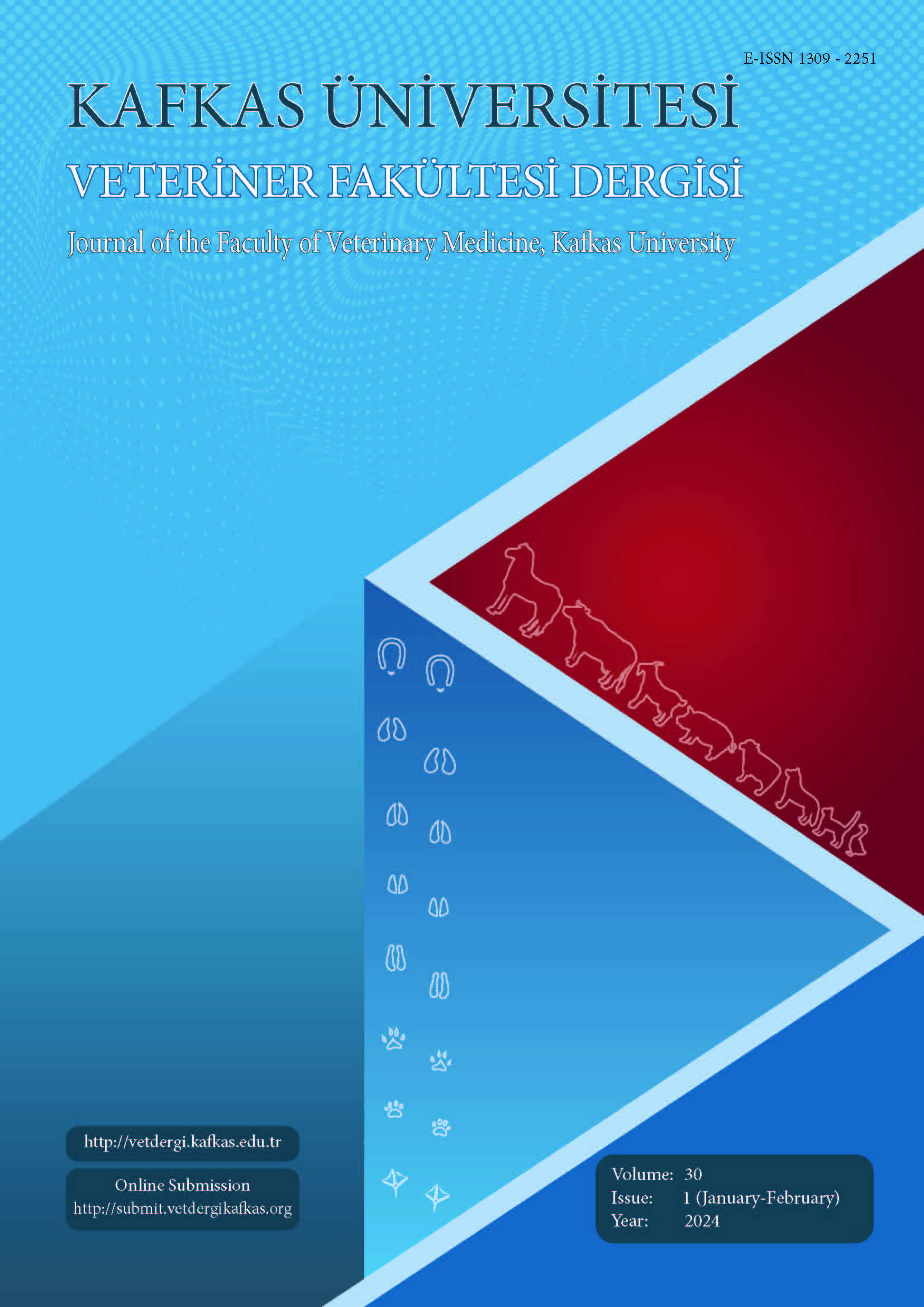
This journal is licensed under a Creative Commons Attribution-NonCommercial 4.0 International License
Kafkas Üniversitesi Veteriner Fakültesi Dergisi
2024 , Vol 30 , Issue 1
Comparative Analgesic Efficacy for Intraperitoneal Administration of Bupivacaine, Ropivacaine, and Ropivacaine-Tizanidine Combination During Ovariohysterectomy of Cats Suffering from Pyometritis
1Department of Surgery, Faculty of Veterinary Sciences, Cholistan University of Veterinary and Animal Sciences, 63100 Bahawalpur, PAKISTAN2Department of Medicine, Faculty of Veterinary Sciences, Cholistan University of Veterinary and Animal Sciences, 63100 Bahawalpur, PAKISTAN
3Department of Parasitology, Faculty of Veterinary Sciences, Cholistan University of Veterinary and Animal Sciences, 63100 Bahawalpur, PAKISTAN
4Department of Theriogenology, Faculty of Veterinary Sciences, Cholistan University of Veterinary and Animal Sciences, 63100 Bahawalpur, PAKISTAN DOI : 10.9775/kvfd.2023.30387 A prospective clinical trial was conducted on 30 cats suffering from pyometritis to investigate the multimodal analgesic efficacy of ropivacaine-tizanidine (RT) combination through intraperitoneal (IP) administration during ovariohysterectomy. Cats were randomly assigned into three groups whereby group RT received 0.5% ropivacaine (1 mg/kg) and tizanidine (10 μg/kg) (IP), group B received 0.5% bupivacaine (2 mg/kg) (IP), and group R received only 0.5% ropivacaine (1 mg/kg) (IP). It was observed that duration for anesthetic recovery (P<0.0001) and extubation time (P=0.0492) differed significantly for group RT. Body temperature and Pulse remained significantly higher in RT group at 1-, and 2-h postoperative intervals, specifically. Interactive Visual Analogue Scale (IVAS) and UNESP-Botucatu Multidimensional Composite Pain Scale (MCPS) scores were significantly lower for group RT at 6-, 8-, and 12-h time periods. Whereas, Mechanical nociceptive threshold (MNT) measurements differed significantly across 1 (P=0.0037), 4 (P=0.0013), 8 (P=0.0024) and 12-h (P=0.0258) time periods. The need for rescue analgesia and Serum cortisol concentrations, consistently remained significantly lower in group RT (P<0.0001). However, values for ALT, AST, ALP, BUN, and creatinine showed no significant differences among groups at 1-, 8-, and 24-h postoperative periods. The study concluded that the ropivacaine-tizanidine combination effectively reduced pain scores, delayed the need for rescue analgesia, and avoided adverse effects. Keywords : Bupivacaine, Intraperitoneal instillation, Multimodal analgesia, Ropivacaine, Tizanidine, UNESP-Botucatu multidimensional composite pain scale










